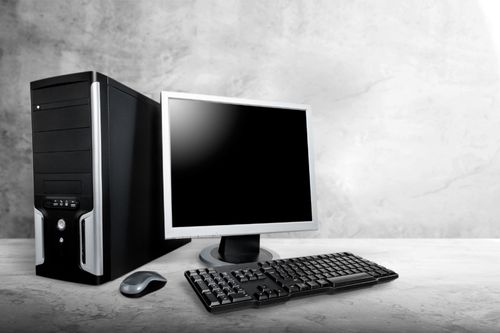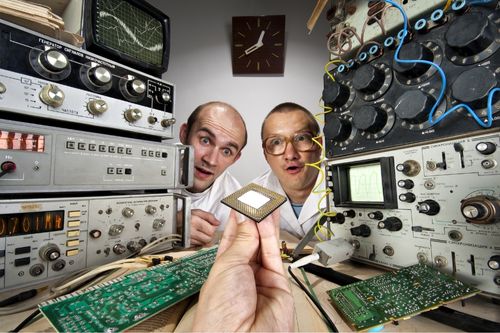Table of Contents
Father of computers | Who was he?
The calculating engines of English mathematician Charles Babbage (1791-1871) are among the most famous icons in computing history. Babbage’s Difference Engine No.1 was the first successful automatic calculator. Many still consider him one of history’s finest examples of precision engineering. If you are still wondering who is the father of computers, it’s the legendary Charles Babbage.
The father of the modern computer

Charles was born in England on December 26, 1791. He was a polymath who studied mathematics, mechanical engineering, invention, and philosophy. He contributed to many scientific fields, but his most well-known work was designing a programmable computing device.
Charles Babbage is the ‘Father of Computers’ and is credited with creating the first mechanical computer. His design became the blueprint for more complex machines.
Based on Babbage’s original drawings, they built a working Difference Engine No. 2 in 1991 at the Science Museum in London.
It had 8,000 parts, weighed five tonnes, and was 11 feet long. They built the engine under conditions that existed in the nineteenth century. The Science Museum finished the printer Babbage designed for the difference engine in 2000.
Early life
There is some disagreement about Charles Babbage’s birthplace, but according to the Oxford Dictionary of National Biography, Babbage was born at 44 Crosby Row at Walworth Road in London, England. To commemorate the birth of this brilliant man, there seems to be an installation of a blue plaque at the intersection of Walworth Road and Larcom Street.
Charles Babbage was one of four children born to Betsy Plumleigh Teape and Benjamin Babbage. His father was a banker and William Praed’s partner. In 1801 they established Praed’s & Co. on Fleet Street in London.
When he was eight years old, Charles Babbage was sent to the countryside for schooling at Alphington near Exeter to help him recover from a nearly killed fever. Later, he attended the King Edward VI Grammar School in Totnes, South Devon, but due to his poor health, he had to return home, and private tutors took his education care.
Babbage went to the small Holmwood academy in Enfield, Middlesex. Babbage’s love of mathematics blossomed in the academy’s library. Babbage returned to Totnes to study with an Oxford tutor. He learned Classics under this tutor to get admission into Cambridge.
Charles Babbage work-front
Mathematical tables were helpful in navigation, science, and engineering during Babbage’s time. They were manually calculated and then compiled into tables. It occasionally made errors in the calculation or the compilation of the tables.
With this background in mind, Babbage decided to create a mechanical device capable of performing calculations. A machine like this would always be accurate and save time and money.
Babbage began work on his first small model of the calculating engine in 1819 and finished it in 1822. A handle crank powered the machine, which computed and printed mathematical tables. It was dubbed a ‘difference engine’ after its operation’s mathematical theory.
The British government shows interest
Babbage’s machine piqued the interest of the British government, and they gave him £1,700 to begin work on a full-scale device (Difference Engine No. 1). Its purpose was to compute and tabulate polynomial functions. Over the next few years, the project would cost more than £17,000.
Unfortunately, the required parts were expensive to produce. The construction of a small working portion was in 1832. However, the development of the full-scale difference engine ceased in 1833.
The difference engine, if built, would have had over 25,000 working parts, weighed more than 13 metric tonnes, and stood more than 8 feet (2.4m) tall.
Analytical engine

Babbage became interested in developing a more ambitious analytical engine in 1837. When completed, this would be more impactful than the original difference engine and would be the first working computer for general-purpose computation.
It could be programmed using punched cards inspired by the Jacquard loom, which they used to weave complex textile patterns. They tried to build a trial part but never finished it. In addition, he created a printer for his new engine.
Many regard his machines as among the very first mechanical computers ever created. They could not build it, but this wasn’t because of a problem with the design; it was because there wasn’t enough money.
While the machines he designed were mechanical and large, the basic concept is similar to that of a modern computer. As a result, we frequently regard him as one of the computer’s pioneers.
Other accomplishments by the father of computer
Below are some of the accomplishments of the great computer scientist.
- Babbage was awarded the Royal Astronomical Society’s Gold Medal in 1824 ‘for his invention of an engine for calculating mathematical and astronomical tables.’
- From 1828 to 1839, Babbage was a Lucasian professor of mathematics at Cambridge. He made significant contributions to several scientific periodicals and established the Astronomical Society in 1820 and the Statistical Society in 1834.
- In 1832, Babbage published ‘On the Economy of Machinery and Manufactures,’ a well-received book about industrial production. The book describes what is now well-known as the ‘Babbage Principle,’ which emphasizes the benefits of utilizing the division of labor in factories.
- In 1837, he published ‘On the Power, Wisdom, and Goodness of God, as manifested in the Creation,’ a natural theology book.
- Babbage invented the pilot (also known as a cow-catcher) in 1838; a metal frame attached to the front of locomotives clears obstacles from the tracks.
- Babbage also developed an ophthalmoscope, which we use in eye exams today.
- Babbage made significant contributions in other areas, including developing the first automatic digital computer. He helped to establish England’s modern postal system and compiled the first reliable actuarial tables.
Key takeaways
- Charles Babbage first proposed the concept of a pre-stored program, which is still used in computers today. Hence, Charles Babbage is the ‘Father of Computers.’
- Babbage created plans for the analytical engine in the mid-1830s. Although they never completed it, the analytical engine would have contained most of the essential elements of today’s computer.
- In 1824, Babbage received the Royal Astronomical Society’s Gold Medal for ‘inventing an engine for calculating mathematical and astronomical tables.’
Did you find this blog informative? If so, do express your thoughts in the comments below. Click here to contact us for more information on who is the father of computers. We would be happy to assist you with your queries.
Liked this blog? Read next: Computer hardware engineer | Important things that you should know
FAQ
Q1. What was the first name of a computer?
Answer- The first modern digital computer was the Atanasoff-Berry computer or ABC.
Q2. What are the types of computers?
Answer- Based on data handling capabilities, the computer has three types- Analogue Computer, Digital Computer, and Hybrid Computer.
Q3. Which was the world’s first supercomputer?
Answer- The Control Data Corporation 6600, the first supercomputer, was introduced in 1964.







